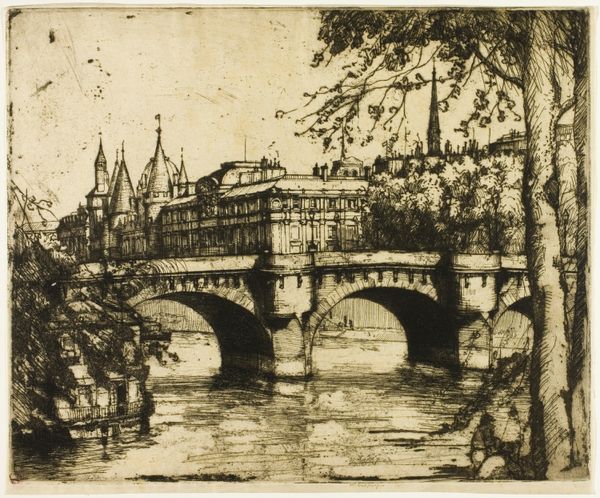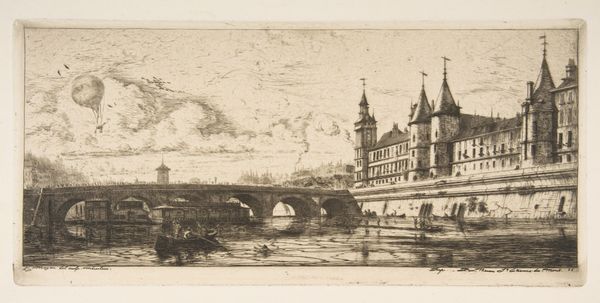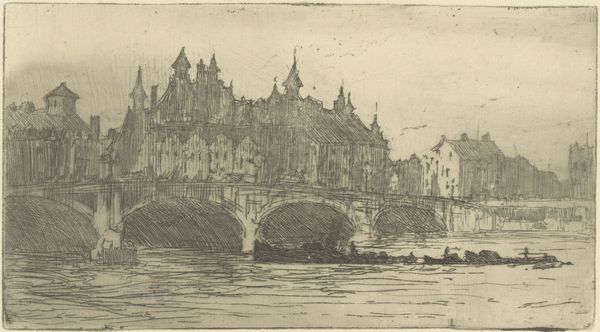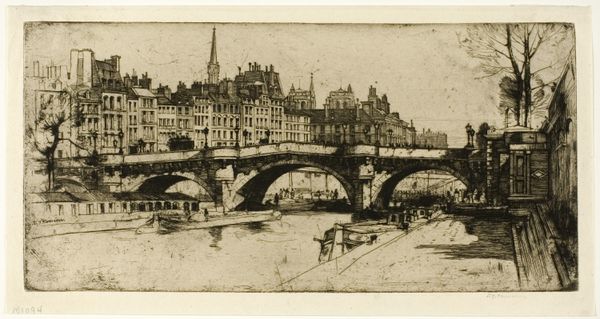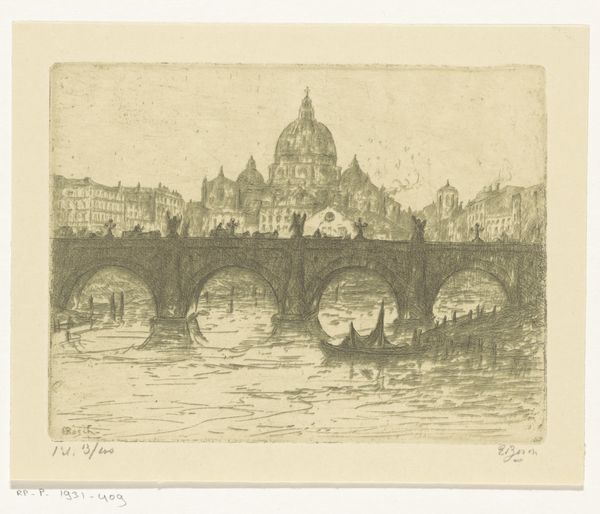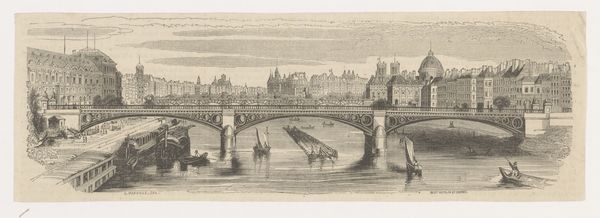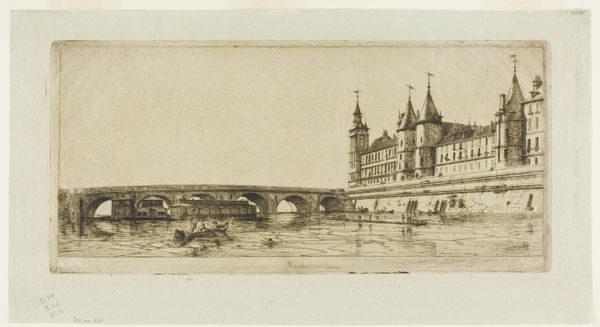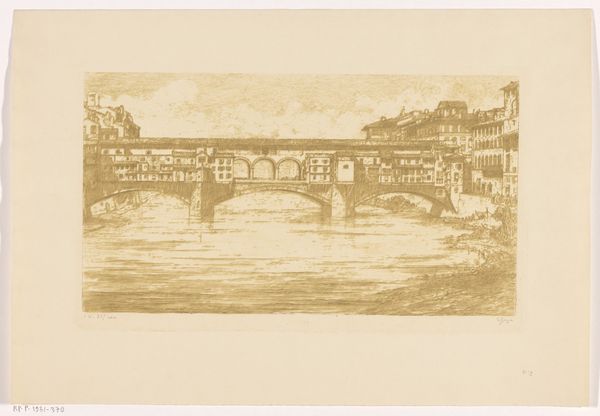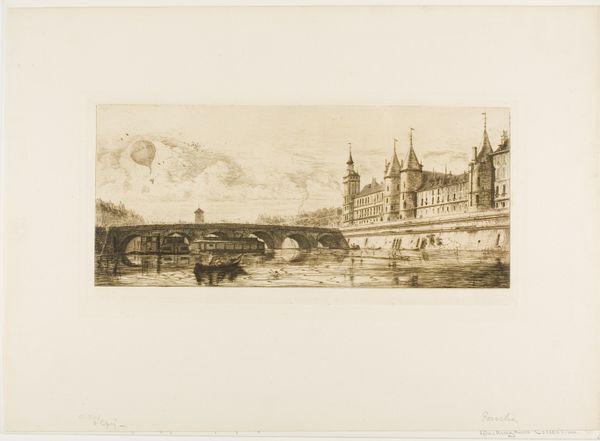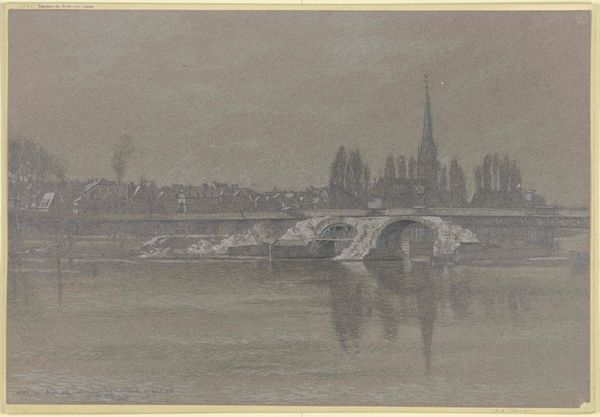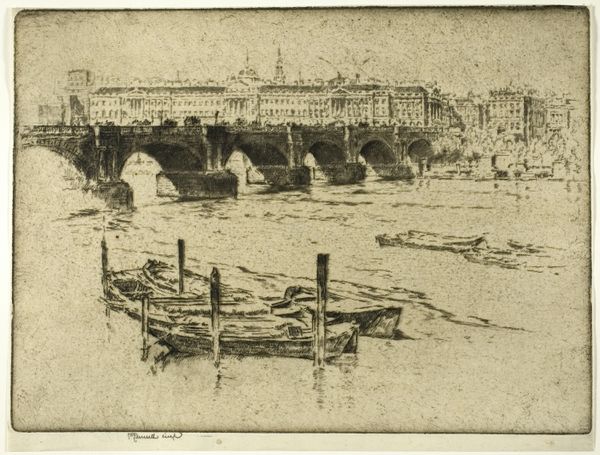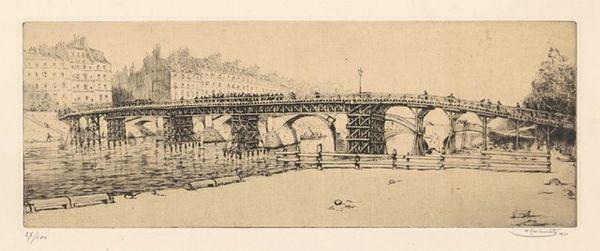
Dimensions: 119 × 328 mm (image/plate); 138 × 331 mm (sheet)
Copyright: Public Domain
Curator: This etching on paper by Donald Shaw MacLaughlan, titled "Le Pont Neuf, Paris," dates back to 1907 and gives a timeless view of Parisian life. Editor: It's stunning! I am struck by how it manages to feel both solid and dreamlike, due to the delicate lines. It is as if the city itself is a memory fading at the edges. Curator: It does capture that hazy, romantic idea of Paris. MacLaughlan was an American artist who made his name in Europe, particularly with prints like these. Consider that his popularity came as urban centers began asserting political and economic power— his prints, mass-produced and relatively inexpensive, captured the vibrancy of modern urbanity for public consumption. Editor: Absolutely, it is no accident that the scene captures Le Pont Neuf, rich in symbolism as the oldest bridge in Paris. Notice the ways in which the image of the bridge extends beyond merely architectural importance; it conveys resilience, permanence, and serves as a steadfast figure in the constant change around it. That image continues to speak to Parisians and the city's long history, even today. Curator: Indeed. Pont Neuf was revolutionary in its time, constructed under the reign of Henry III. It lacked the houses which were typical of bridges at the time, thereby allowing an unobstructed view of the Seine, so of course artists would eventually embrace it as a central subject. Editor: Look closely, and you see a collection of archetypal city structures behind it. In choosing this subject, the artist invokes a feeling of continuity through a layering of symbols: flowing river, solid bridge, classic architecture. There’s something reassuring in this scene, despite its depiction being in monochrome, isn't there? Curator: Definitely. And consider how that feeling permeated society: prints of scenes like this played a key role in shaping the collective idea of Paris itself. They became a valuable cultural commodity, shaping public understanding and memory through selective romanticization. Editor: That is really well captured in MacLaughlan’s etching! Thanks to his focus on enduring symbols, we’re still finding new meaning in the city’s architecture. Curator: Yes. An artist’s decision of where to put their focus has long historical ripples.
Comments
No comments
Be the first to comment and join the conversation on the ultimate creative platform.
